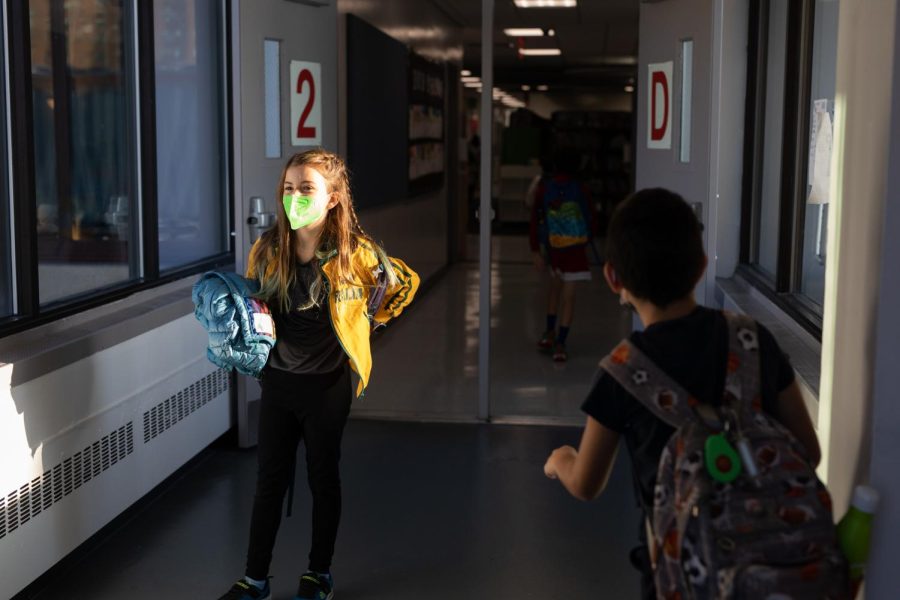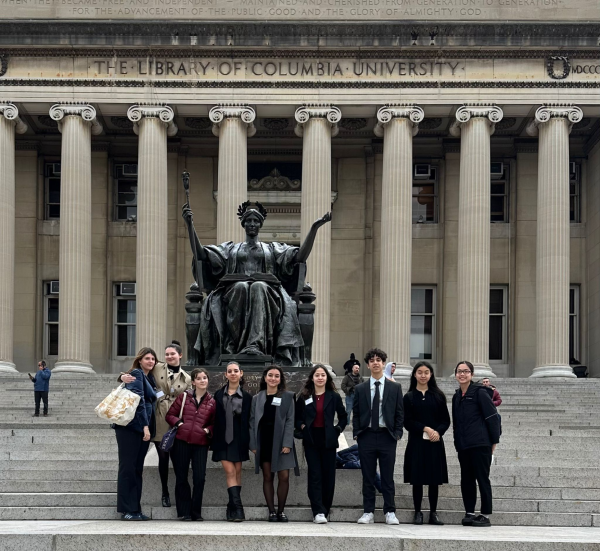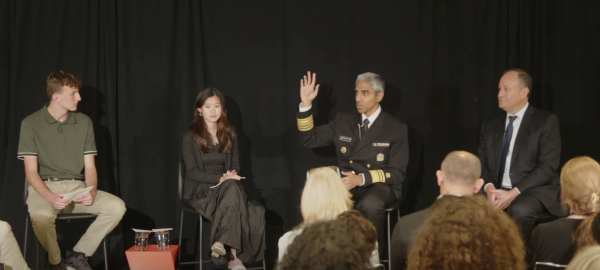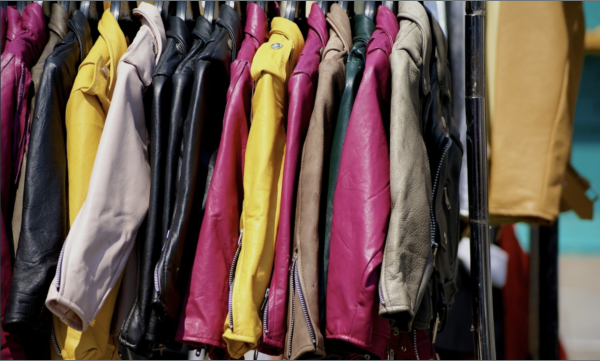UNIS’s Response to Omicron
Over the past three months, the world has faced a new mutation of the coronavirus — the Omicron variant. First reported on November 24, 2021 to the WHO in South Africa, the variant rapidly spread around the world, reaching New York in mid-December, and bringing up the 7-day average positivity test rate past 40,000 daily cases in just three weeks. Put in perspective, that is about 6 times more daily reported cases than were recorded during the same time last year, or in April of 2020.
Despite the significant surge in cases, UNIS has decided not to switch to a remote or hybrid learning model—unlike in previous school years—to prevent potential spread of the virus. “We have shifted to the point of view that says we want desperately to keep students in school,” said UNIS’s director Dan Brenner in an interview for UNISVerse.
The reason behind this is that UNIS leadership, like the CDC, realized the importance of in-person instruction “to support the social, emotional, and academic development of students and improve life outcomes”. This thought can be seen as the driving force behind UNIS’s current protocols, as Dr. Brenner stated: “I’m doing everything in my power not to go back to a hybrid [learning model].”
Keeping teachers safe
In the past weeks, Dr. Brenner stressed the importance of the faculty’s safety: “We’re desperately trying to keep teachers in school because ultimately that’s what keeps the school open.” However, at the same time, “they are following the same protocols [as students], except some of their meetings are now over Zoom.”
While this approach seems to work as a paradox, it does not appear to be a substantial problem. After all, UNIS has remained open since January 10 for in-person instruction, and only a handful of teachers have had short-term absences.
Change in testing protocols
The rapid surge in positive cases caused a spike in demand for COVID testing nationwide, consequently increasing the processing times of New York City laboratories. As a result, UNIS decided to switch to rapid testing in school. “We’re not doing pool testing because of the amount of time it took to get back our results,” commented Dr. Brenner. In his newsletter on January 10, he argued that “this is still an excellent first line of defense.”
Dr. Brenner also stated that “We are doing arguably more testing now than when we were pool testing.” He based his opinion on the fact that UNIS requires close contacts to “test daily on a school-provided test each morning after the quarantine period for five consecutive school days,” while previously, a sample of the community would be tested only once a week using the saliva pool tests.
Safety first
In response to the surge in COVID cases, UNIS introduced several new measures with the intention of further preventing spread. Beginning in the new year, the bubble has been transformed into “additional cafeteria space”, resulting in having only one grade eat at a time in each of the designated spaces. Moreover, supervisors often check student IDs and club cards to enforce that this is the case. UNIS also promised that all food will be pre-packaged, with the reason being to “minimize the amount of contact, and also the amount of time waiting.” This is the case with the exception of hot lunch in the cafeteria, which continues to be portioned in real-time and served on the usual plates.
Looking back at last fall, students can recall the long lines for checkout during morning break, hot lunch and made-to-order deli sandwiches. Not to mention the “ridiculous” queue that sometimes appeared in front of the cafeteria (which was ironically created to decrease crowding and minimize close contact). With the new measures in place, this is, for the most part, not the case anymore: the general wait times are noticeably lower. As Dr. Brenner wrote in his update on January 10, “Crowding has been managed.”
This comes at a cost, however. Besides creating an uncomfortable experience for some students, the current situation requires a significant amount of disposable plasticware and packaging. Dr. Brenner acknowledged this problem, and argued that the safety of UNIS students and staff is currently more important: “I felt like the trade-off in the short term was having people in closer contact waiting in lines, versus the sustainability at that moment.”
A similar problem arises with the use of disposable PPE, especially single-use masks. In recent announcements, UNIS has made the suggestion that “Everyone (children included) should upgrade from reusable fabric masks to medical-grade masks and even consider double masking.” Dr. Brenner also stated in an interview that “we’ve made KN-95s available for free to faculty”. These masks have been scientifically proven to significantly reduce the amount of COVID-19 transmission, however, their use creates a substantial amount of waste as opposed to the washing and reusing of cloth masks.
Airflow
The CDC recommends thorough ventilation in indoor environments, as it “can help reduce viral particle concentration”. UNIS, however, is currently not mandating that classrooms have their windows open to allow fresh air to circulate. Dr. Brenner argued that the reason behind this is to create “a balance between comfort, and being able to learn in a room that’s comfortable…” He continued, “depending on where the rooms are, the wind is significantly different…so I’m trying to be sensitive to that.” Therefore, he leaves the judgment call to teachers.
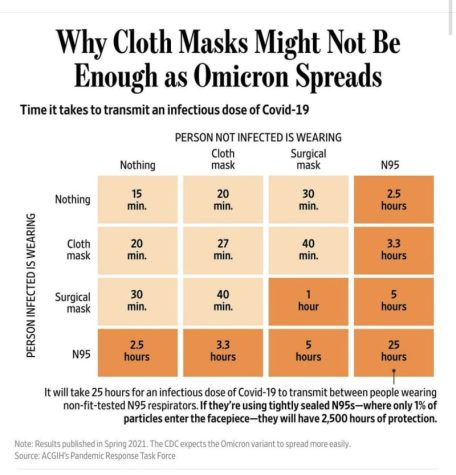
Cafeteria seating
Since January, students have been limited to sitting two per table, with the goal of “keep[ing] people as separated as possible”. Dr. Brenner said that the cafeteria and bubble seating is “set up in a way where we’re looking for six feet”, and “if people move inside of that, then we have supervisors who ask the people to keep apart.” This is a significant change, given that students were allowed to sit four at a table when the school year started, and three in late fall.
It is yet questionable whether this is sufficient to prevent the spread of the virus, given that the infographic shared by Dr. Brenner states that two individuals not wearing masks can transmit COVID after 15 minutes of close contact. The U.S. Environmental Protection Agency (EPA) furthers this claim by stating that “transmission of COVID-19 from inhalation of virus in the air can occur at distances greater than six feet.” Nevertheless, Dr. Brenner is sticking with the requirement of six feet social distancing at lunch, stating that “At this point, we are not considering one person per table.”
Rapid spread
There have been rumors of students getting COVID during last year’s December exams, claiming that it was due to poor ventilation and minimal social distancing. While this may have been true, it is very difficult to say where exactly one got infected, given that there are many other instances of close contact during the day, on top of the fact that the overall infection rate in New York City was very significant during the Omicron wave.
Dr. Brenner commented on this idea, stating: “I think that at this point people can make assumptions as to where they are getting COVID, but it’s so rampant…Whether or not someone got it walking to school, standing next to a friend, on the subway not knowing who was there, sitting at the table in the cafeteria, or at a testing table, it’s very difficult to say where you got it from.”
Future response
It seems like experts are turning to the opinion that the virus is becoming endemic, many European countries are easing off their COVID restrictions despite having a significant amount of positive cases, and the ratio of deaths and positive cases is on a decline thanks to the effectiveness of vaccines. Yet, scientists are realizing that herd immunity will most likely never be reached, opening up possibilities for the virus to keep evolving, possibly into more threatening mutations.
The future of the pandemic is full of unknowns, as Dr. Brenner stated, which is why “I can’t say how we’ll respond moving forward because so much is changing so fast, that it would be irresponsible to say that I am going to respond in a certain way.” All we know is that following protocols and getting vaccinated is the best way to protect ourselves and others, and hopefully we will remain strong in the ongoing fight.
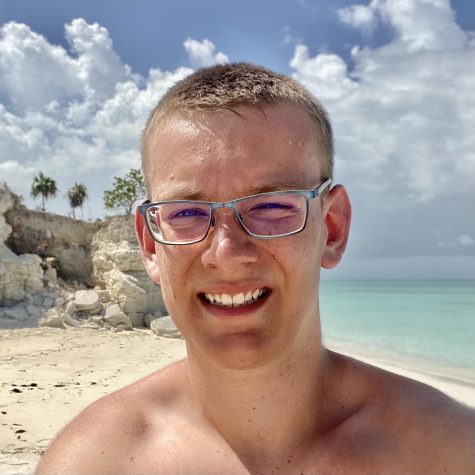
I'm in the class of 2023, and I enjoy writing feature and news stories related to UNIS, as well as bike riding and playing board games.



